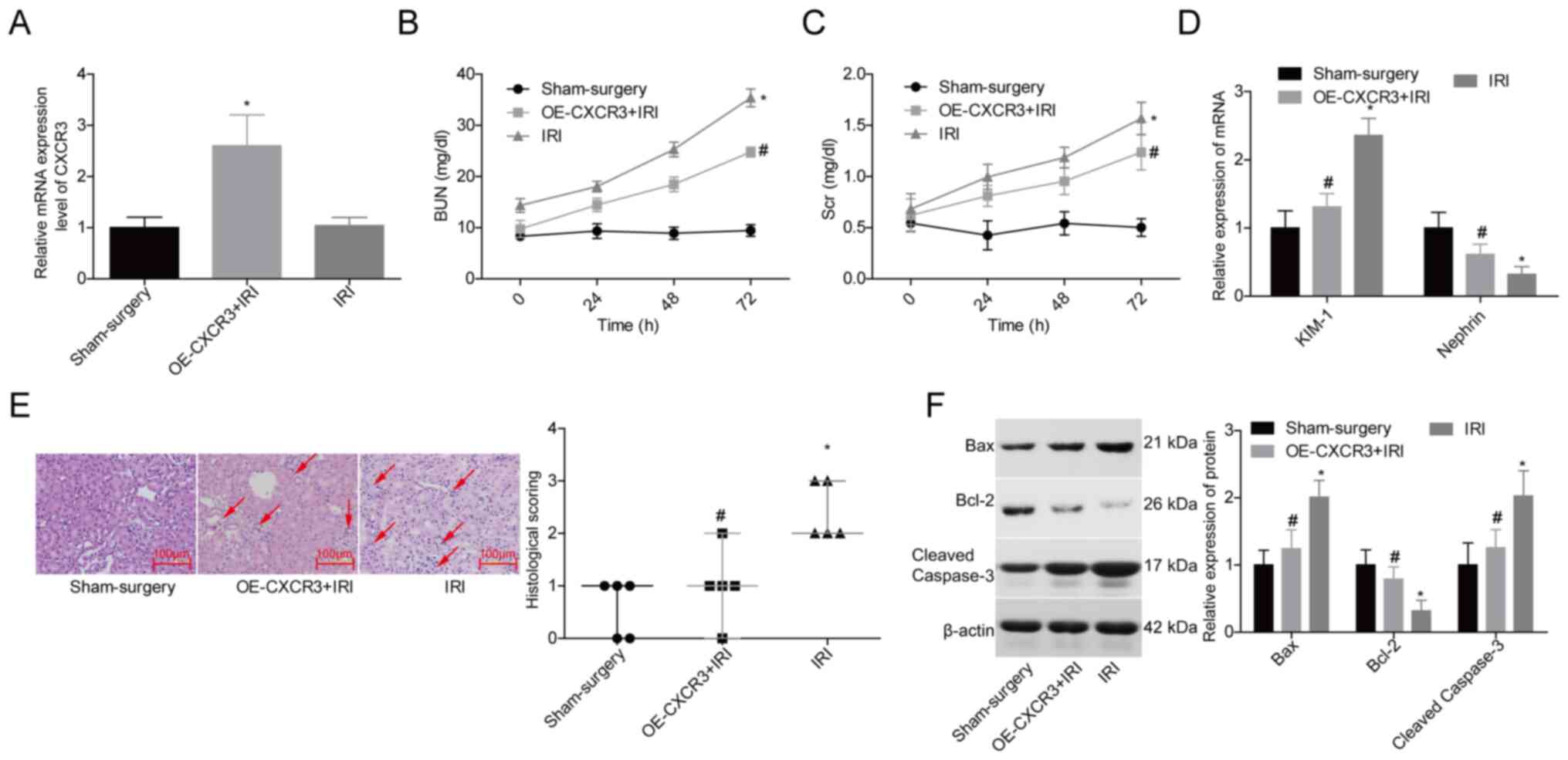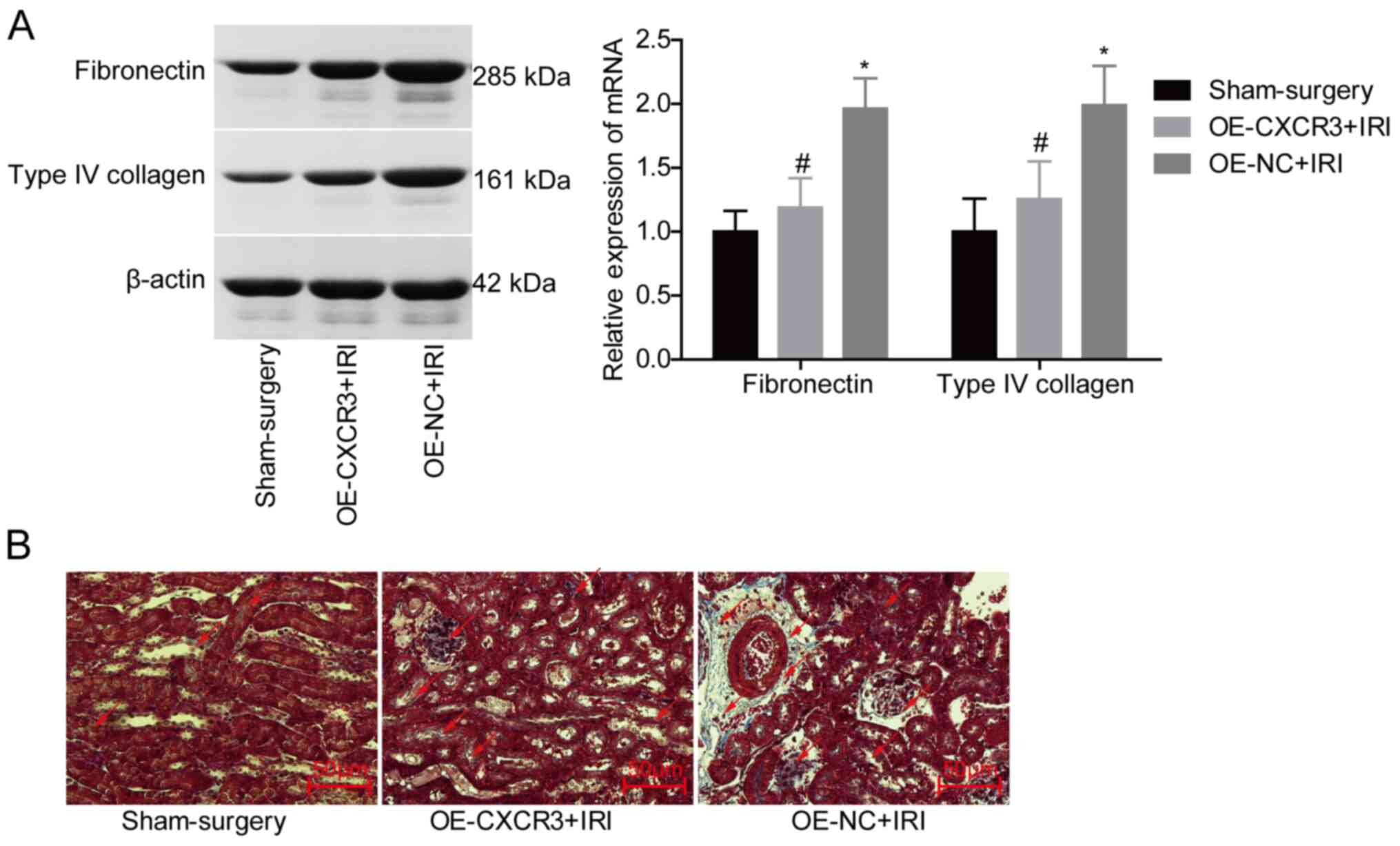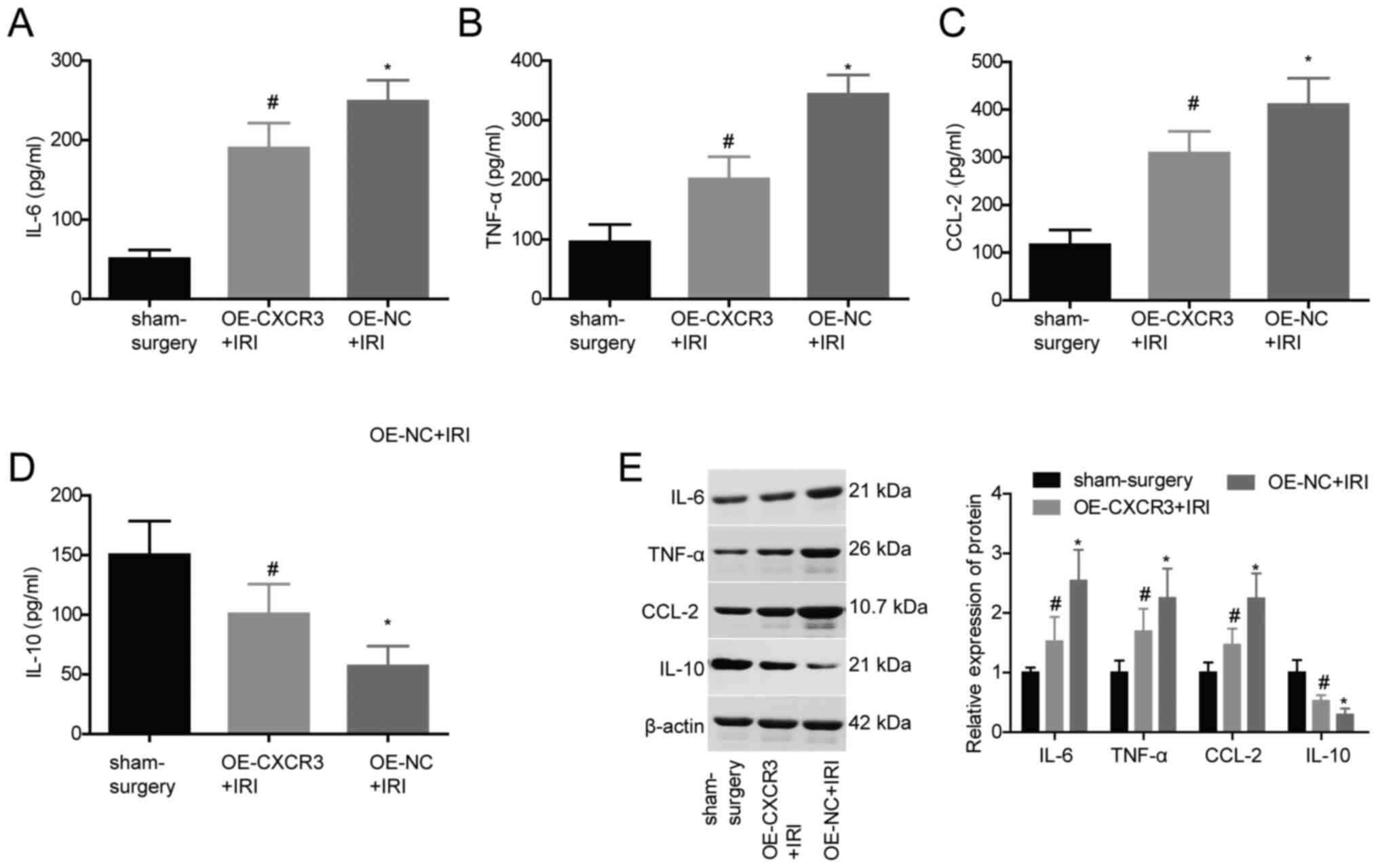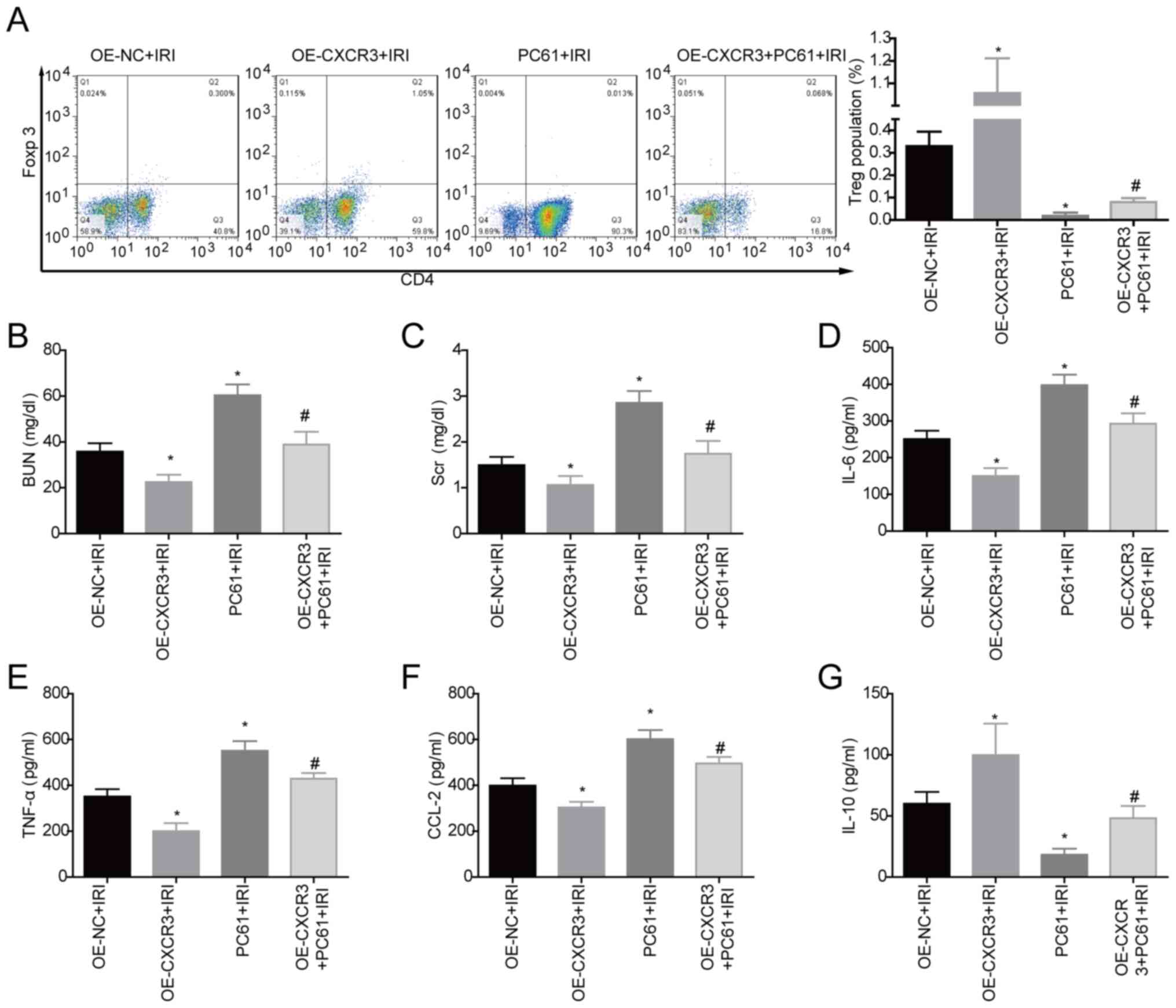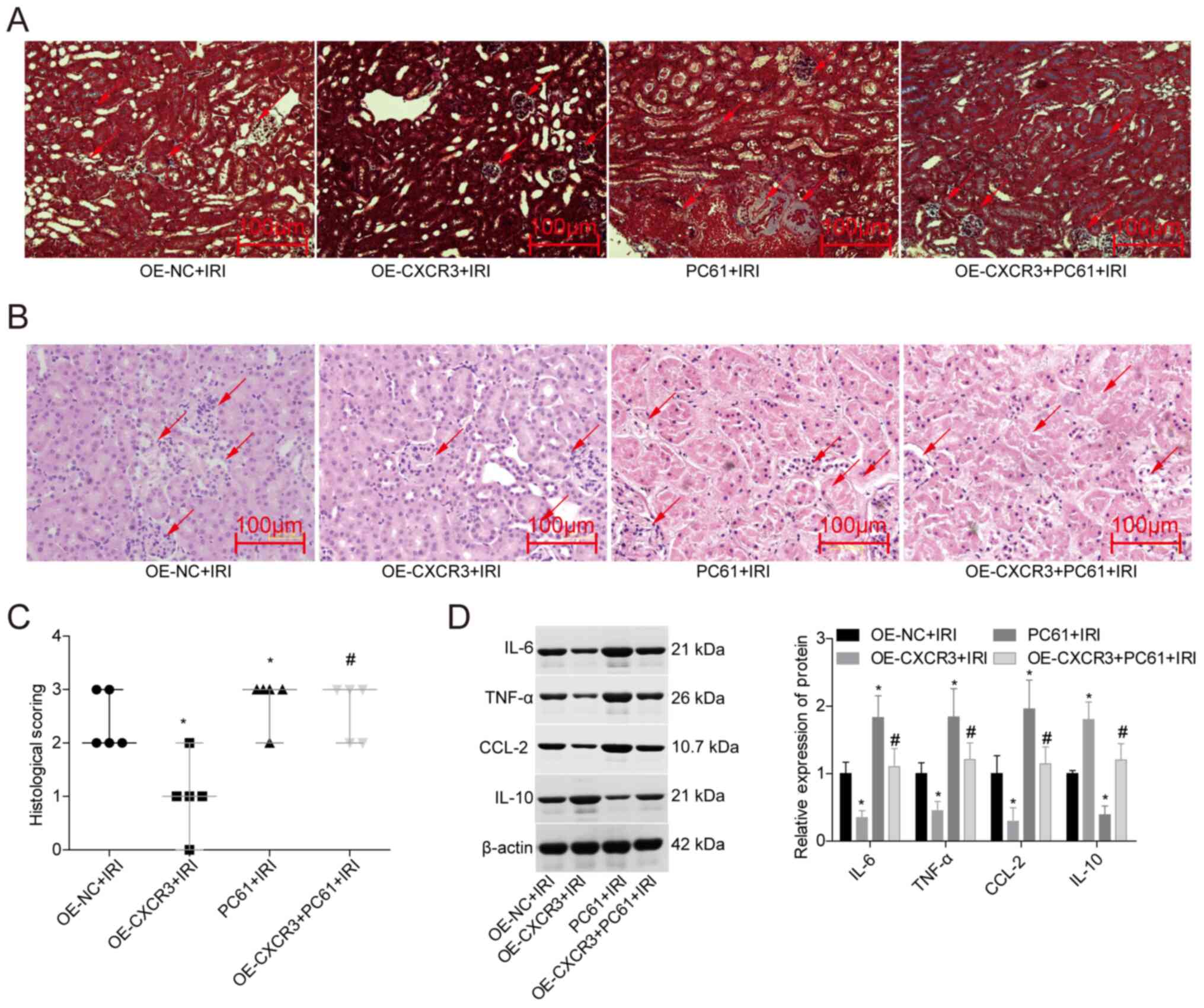|
1
|
Smith SF, Hosgood SA and Nicholson ML:
Ischemia-reperfusion injury in renal transplantation: 3 key
signaling pathways in tubular epithelial cells. Kidney Int.
95:50–56. 2019. View Article : Google Scholar : PubMed/NCBI
|
|
2
|
Hosszu A, Fekete A and Szabo AJ: Sex
differences in renal ischemia-reperfusion injury. Am J Physiol
Renal Physiol. 319:F149–F154. 2020. View Article : Google Scholar : PubMed/NCBI
|
|
3
|
Kim M, Park SW, Kim M, Chen SW, Gerthoffer
WT, D'Agati VD and Lee HT: Selective renal overexpression of human
heat shock protein 27 reduces renal ischemia-reperfusion injury in
mice. Am J Physiol Renal Physiol. 299:F347–F358. 2010. View Article : Google Scholar : PubMed/NCBI
|
|
4
|
Jang HR and Rabb H: Immune cells in
experimental acute kidney injury. Nat Rev Nephrol. 11:88–101. 2015.
View Article : Google Scholar : PubMed/NCBI
|
|
5
|
Fontenot JD and Rudensky AY: A well
adapted regulatory contrivance: Regulatory T cell development and
the forkhead family transcription factor Foxp3. Nat Immunol.
6:331–337. 2005. View
Article : Google Scholar : PubMed/NCBI
|
|
6
|
Luan H, Wang C, Sun J, Zhao L, Li L, Zhou
B, Shao S, Shen X and Xu Y: Resolvin D1 protects against
ischemia/reperfusion-induced acute kidney injury by increasing treg
percentages via the ALX/FPR2 pathway. Front Physiol. 11:2852020.
View Article : Google Scholar : PubMed/NCBI
|
|
7
|
Haas J, Schwarz A, Korporal-Kuhnke M,
Jarius S and Wildemann B: Myeloid dendritic cells exhibit defects
in activation and function in patients with multiple sclerosis. J
Neuroimmunol. 301:53–60. 2016. View Article : Google Scholar : PubMed/NCBI
|
|
8
|
Yazdani M, Khosropanah S, Hosseini A and
Doroudchi M: Resting and activated natural tregs decrease in the
peripheral blood of patients with atherosclerosis. Iran J Immunol.
13:249–262. 2016.PubMed/NCBI
|
|
9
|
Ahmad SF, Zoheir KMA, Ansari MA, Nadeem A,
Bakheet SA, Al-Ayadhi LY, Alzahrani MZ, Al-Shabanah OA, Al-Harbi MM
and Attia SM: Dysregulation of Th1, Th2, Th17, and T regulatory
cell-related transcription factor signaling in children with
autism. Mol Neurobiol. 54:4390–4400. 2017. View Article : Google Scholar : PubMed/NCBI
|
|
10
|
Alroqi FJ and Chatila TA: T regulatory
cell biology in health and disease. Curr Allergy Asthma Rep.
16:272016. View Article : Google Scholar : PubMed/NCBI
|
|
11
|
Bai M, Zhang L, Fu B, Bai J, Zhang Y, Cai
G, Bai X, Feng Z, Sun S and Chen X: IL-17A improves the efficacy of
mesenchymal stem cells in ischemic-reperfusion renal injury by
increasing Treg percentages by the COX-2/PGE2 pathway. Kidney Int.
93:814–825. 2018. View Article : Google Scholar : PubMed/NCBI
|
|
12
|
Gandolfo MT, Jang HR, Bagnasco SM, Ko GJ,
Agreda P, Satpute SR, Crow MT, King LS and Rabb H:
Foxp3+ regulatory T cells participate in repair of
ischemic acute kidney injury. Kidney Int. 76:717–729. 2009.
View Article : Google Scholar : PubMed/NCBI
|
|
13
|
Kinsey GR, Huang L, Vergis AL, Li L and
Okusa MD: Regulatory T cells contribute to the protective effect of
ischemic preconditioning in the kidney. Kidney Int. 77:771–780.
2010. View Article : Google Scholar : PubMed/NCBI
|
|
14
|
Qin S, Rottman JB, Myers P, Kassam N,
Weinblatt M, Loetscher M, Koch AE, Moser B and Mackay CR: The
chemokine receptors CXCR3 and CCR5 mark subsets of T cells
associated with certain inflammatory reactions. J Clin Invest.
101:746–754. 1998. View
Article : Google Scholar : PubMed/NCBI
|
|
15
|
Hasegawa H, Inoue A, Kohno M, Lei J,
Miyazaki T, Yoshie O, Nose M and Yasukawa M: Therapeutic effect of
CXCR3-expressing regulatory T cells on liver, lung and intestinal
damages in a murine acute GVHD model. Gene Ther. 15:171–182. 2008.
View Article : Google Scholar : PubMed/NCBI
|
|
16
|
Oo YH, Weston CJ, Lalor PF, Curbishley SM,
Withers DR, Reynolds GM, Shetty S, Harki J, Shaw JC, Eksteen B, et
al: Distinct roles for CCR4 and CXCR3 in the recruitment and
positioning of regulatory T cells in the inflamed human liver. J
Immunol. 184:2886–2898. 2010. View Article : Google Scholar : PubMed/NCBI
|
|
17
|
Jun C, Qingshu L, Ke W, Ping L, Jun D, Jie
L and Su M: Protective effect of CXCR3(+)CD4(+)CD25(+)Foxp3(+)
regulatory T cells in renal ischemia-reperfusion injury. Mediators
Inflamm. 2015:3609732015. View Article : Google Scholar : PubMed/NCBI
|
|
18
|
Gu J, Sun P, Zhao H, Watts HR, Sanders RD,
Terrando N, Xia P, Maze M and Ma D: Dexmedetomidine provides
renoprotection against ischemia-reperfusion injury in mice. Crit
Care. 15:R1532011. View
Article : Google Scholar : PubMed/NCBI
|
|
19
|
Zhang Q, Luan H, Wang L, He F, Zhou H, Xu
X, Li X, Xu Q, Niki T, Hirashima M, et al: Galectin-9 ameliorates
anti-GBM glomerulonephritis by inhibiting Th1 and Th17 immune
responses in mice. Am J Physiol Renal Physiol. 306:F822–F832. 2014.
View Article : Google Scholar : PubMed/NCBI
|
|
20
|
Livak KJ and Schmittgen TD: Analysis of
relative gene expression data using real-time quantitative PCR and
the 2(-Delta Delta C(T)) method. Methods. 25:402–408. 2001.
View Article : Google Scholar : PubMed/NCBI
|
|
21
|
Fiorina P, Ansari MJ, Jurewicz M, Barry M,
Ricchiuti V, Smith RN, Shea S, Means TK, Auchincloss H Jr, Luster
AD, et al: Role of CXC chemokine receptor 3 pathway in renal
ischemic injury. J Am Soc Nephrol. 17:716–723. 2006. View Article : Google Scholar : PubMed/NCBI
|
|
22
|
Zhang C, Zheng L, Li L, Wang L, Li L,
Huang S, Gu C, Zhang L, Yang C, Zhu T and Rong R: Rapamycin
protects kidney against ischemia reperfusion injury through
recruitment of NKT cells. J Transl Med. 12:2242014. View Article : Google Scholar : PubMed/NCBI
|
|
23
|
Ichimura T, Bonventre JV, Bailly V, Wei H,
Hession CA, Cate RL and Sanicola M: Kidney injury molecule-1
(KIM-1), a putative epithelial cell adhesion molecule containing a
novel immunoglobulin domain, is up-regulated in renal cells after
injury. J Biol Chem. 273:4135–4142. 1998. View Article : Google Scholar : PubMed/NCBI
|
|
24
|
Villa L, Buono R, Ferrandi M, Molinari I,
Benigni F, Bettiga A, Colciago G, Ikehata M, Messaggio E, Rastaldi
MP, et al: Ouabain contributes to kidney damage in a rat model of
renal ischemia-reperfusion injury. Int J Mol Sci. 17:17282016.
View Article : Google Scholar : PubMed/NCBI
|
|
25
|
Lacotte S, Brun S, Muller S and Dumortier
H: CXCR3, inflammation, and autoimmune diseases. Ann N Y Acad Sci.
1173:310–317. 2009. View Article : Google Scholar : PubMed/NCBI
|
|
26
|
Zhang X, Han J, Man K, Li X, Du J, Chu
ESH, Go MYY, Sung JJY and Yu J: CXC chemokine receptor 3 promotes
steatohepatitis in mice through mediating inflammatory cytokines,
macrophages and autophagy. J Hepatol. 64:160–170. 2016. View Article : Google Scholar : PubMed/NCBI
|
|
27
|
Rocha VZ, Folco EJ, Ozdemir C, Sheikine Y,
Christen T, Sukhova GK, Tang EHC, Bittencourt MS, Santos RD, Luster
AD, et al: CXCR3 controls T-cell accumulation in fat inflammation.
Arterioscler Thromb Vasc Biol. 34:1374–1381. 2014. View Article : Google Scholar : PubMed/NCBI
|
|
28
|
Altara R, Mallat Z, Booz GW and Zouein FA:
The CXCL10/CXCR3 axis and cardiac inflammation: Implications for
immunotherapy to treat infectious and noninfectious diseases of the
heart. J Immunol Res. 2016:43963682016. View Article : Google Scholar : PubMed/NCBI
|
|
29
|
Abron JD, Singh NP, Murphy AE, Mishra MK,
Price RL, Nagarkatti M, Nagarkatti PS and Singh UP: Differential
role of CXCR3 in inflammation and colorectal cancer. Oncotarget.
9:17928–17936. 2018. View Article : Google Scholar : PubMed/NCBI
|
|
30
|
Karin N, Wildbaum G and Thelen M: Biased
signaling pathways via CXCR3 control the development and function
of CD4+ T cell subsets. J Leukoc Biol. 99:857–862. 2016.
View Article : Google Scholar : PubMed/NCBI
|
|
31
|
Karin N and Wildbaum G: The role of
chemokines in adjusting the balance between CD4+
effector T cell subsets and FOXp3-negative regulatory T cells. Int
Immunopharmacol. 28:829–835. 2015. View Article : Google Scholar : PubMed/NCBI
|
|
32
|
Zohar Y, Wildbaum G, Novak R, Salzman AL,
Thelen M, Alon R, Barsheshet Y, Karp CL and Karin N:
CXCL11-dependent induction of FOXP3-negative regulatory T cells
suppresses autoimmune encephalomyelitis. J Clin Invest.
124:2009–2022. 2014. View Article : Google Scholar : PubMed/NCBI
|
|
33
|
Chung AC and Lan HY: Chemokines in renal
injury. J Am Soc Nephrol. 22:802–809. 2011. View Article : Google Scholar : PubMed/NCBI
|
|
34
|
Groom JR and Luster AD: CXCR3 in T cell
function. Exp Cell Res. 317:620–631. 2011. View Article : Google Scholar : PubMed/NCBI
|
|
35
|
Bakheet SA, Ansari MA, Nadeem A, Attia SM,
Alhoshani AR, Gul G, Al-Qahtani QH, Albekairi NA, Ibrahim KE and
Ahmad SF: CXCR3 antagonist AMG487 suppresses rheumatoid arthritis
pathogenesis and progression by shifting the Th17/Treg cell
balance. Cell Signal. 64:1093952019. View Article : Google Scholar : PubMed/NCBI
|















